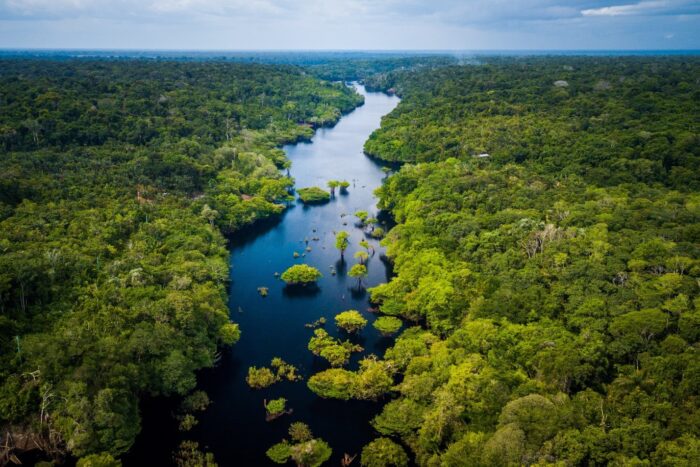Biodiversity, the variety of life on Earth, encompasses the genetic differences within species, the variety of species themselves, and the range of ecosystems that house them. Steve Wentzel explores how this diversity is crucial for maintaining the balance of ecosystems, providing resilience against environmental changes, and supporting human life through ecosystem services such as pollination, water purification, and disease regulation. However, biodiversity is under threat from various human activities, with deforestation being one of the most significant contributors.
The Importance of Biodiversity
Biodiversity is essential for ecosystem health and functions. Diverse ecosystems are more resilient to environmental stressors such as climate change, pollution, and invasive species. This resilience stems from the variety of organisms that can adapt to changes and help maintain ecosystem functions. For example, a forest with diverse plant species is more capable of withstanding diseases and pests because some species will have resistance to such threats.
Furthermore, biodiversity contributes to ecosystem services that are vital for human survival and well-being. These services include food production, water purification, climate regulation, and pollination. For instance, bees and other pollinators are essential for the reproduction of many plants, including those that produce fruits, vegetables, and nuts. The loss of these pollinators would lead to a decline in food production, affecting global food security.
The Threat of Deforestation
Deforestation, the large-scale removal of forests, poses a severe threat to biodiversity on a worldwide scale. Forests are home to a significant portion of the world’s terrestrial species. The Amazon rainforest alone contains about 10% of all known species. When forests are cleared for agriculture, logging, or urban development, the habitats of countless species are destroyed, leading to a significant loss of biodiversity.
The impact of deforestation on biodiversity can be understood in several key ways:
- Habitat Destruction: Forests provide shelter, food, and breeding grounds for a myriad of species. When these forests are destroyed, species lose their habitats and may face extinction if they cannot adapt or relocate. For example, the deforestation of tropical rainforests has led to the decline of species such as orangutans, tigers, and numerous bird species.
- Fragmentation: Even when not completely cleared, the fragmentation of forests into smaller, isolated patches can still significantly impact biodiversity. Fragmentation reduces the available habitat and can isolate populations, making it difficult for species to find mates and maintain genetic diversity. This can lead to inbreeding and a decrease in population viability.
- Climate Change: Forests play a critical role in regulating the Earth’s climate by absorbing carbon dioxide during photosynthesis. Deforestation releases this stored carbon back into the atmosphere, contributing to global warming. Climate change, in turn, affects biodiversity by altering habitats and the distribution of species. Many species may not be able to adapt quickly enough to these changes, leading to further declines in biodiversity.
- Soil Degradation: Forests protect soil from erosion and maintain its fertility through the decomposition of organic matter. When forests are cleared, the exposed soil is prone to erosion, reducing its ability to support plant life. This degradation can lead to a loss of plant species and negatively impact the animals that depend on them.
Consequences of Biodiversity Loss
The loss of biodiversity due to deforestation has far-reaching consequences for ecosystems and human societies. Some of the most significant impacts include:
- Reduced Ecosystem Services: As biodiversity declines, so do the ecosystem services that support human life. For example, the loss of pollinators can directly reduce food production, while the loss of forests can decrease water quality and increase the risk of flooding.
- Increased Vulnerability: Ecosystems with reduced biodiversity are less resilient to environmental changes and disturbances. This increased vulnerability can lead to more frequent and severe ecological disruptions, such as pest outbreaks, disease spread, and natural disasters.
- Economic Impact: Biodiversity loss can have significant economic implications. Many industries, such as agriculture, pharmaceuticals, and tourism, rely heavily on healthy ecosystems. The decline in biodiversity can lead to reduced productivity, higher costs, and loss of livelihoods for communities that are dependent on natural resources.
- Cultural Loss: Many cultures have deep connections to their natural environments and the species within them. Biodiversity loss can lead to the erosion of cultural heritage, traditional knowledge, and practices that have been developed over generations.
Solutions and Conservation Efforts
Addressing the threat of deforestation and biodiversity loss requires a multifaceted approach involving conservation, sustainable practices, and global cooperation. Some effective strategies include:
- Protected Areas: Establishing and managing protected areas, such as national parks and wildlife reserves, can safeguard critical habitats and species. These areas provide safe havens where ecosystems can function without human interference.
- Sustainable Forestry: Implementing sustainable forestry practices can help reduce the impact of logging on biodiversity. This includes selective logging, maintaining buffer zones, and ensuring that harvested areas are allowed to regenerate.
- Reforestation and Afforestation: Planting trees in deforested areas (reforestation) and creating new forests (afforestation) can restore habitats, enhance biodiversity, and sequester carbon dioxide. These efforts can help mitigate climate change and support ecosystem recovery.
- Community Involvement: Engaging local communities in conservation efforts is crucial for their success. Community-based conservation programs empower people to protect their natural resources and benefit from sustainable practices.
- International Agreements: Global cooperation is an essential part of addressing deforestation and biodiversity loss. International agreements, such as the Convention on Biological Diversity (CBD) and the United Nations Framework Convention on Climate Change (UNFCCC), provide frameworks for countries to work together towards common conservation goals.
Biodiversity is vital for the health of our planet and the well-being of all its inhabitants. Deforestation poses a significant threat to this biodiversity, leading to habitat destruction, species loss, and ecological imbalance. To preserve biodiversity and ensure a sustainable future, it is crucial to adopt these conservation strategies, promote sustainable practices, and foster global cooperation. By understanding the importance of biodiversity and the dangers posed by deforestation, we can take meaningful steps to protect our natural world for future generations.
